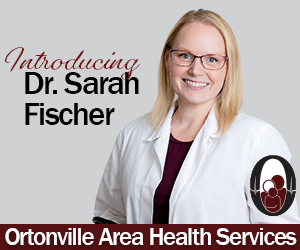Wilmot’s Merilys Porter-Brown — 100-Year-Old Army Flight Nurse Remembers D-Day
Local News June 6, 2018 Staff Writer 0

 Lieutenant Merilys Porter was one of the first rescuers to land on Omaha Beach just after D-Day. She was a member of a revolutionary combat team – US Army flight nurses. But the carnage at Normandy allowed no time for her to consider how she was making history.
Lieutenant Merilys Porter was one of the first rescuers to land on Omaha Beach just after D-Day. She was a member of a revolutionary combat team – US Army flight nurses. But the carnage at Normandy allowed no time for her to consider how she was making history.
On June 6, 1944, just six days earlier, 160,000 Allied troops had stormed a stretch of heavily-fortified coastline on the beaches of Normandy, France. More than 5000 ships and 13,000 aircraft had supported the invasion, but things had gone haywire and the cost in human lives was high. The number of Allied casualties – killed or wounded- at Omaha Beach alone was estimated to be 2000.
Lieutenant Porter arrived as the first US combat runway was constructed and a tent hospital was set up next to it. The wounded soldiers were triaged to determine who was seriously injured enough to be flown to the hospital in England, but would not die in transit, and who would be treated on the ground. There were no hard and fast rules as the Omaha Beach landing was the first time the US military attempted medical evacuation from the front lines by air.
Douglas C-47s, nicknamed Gooney Birds (and coincidentally, called Dakotas by the British), carried in medical supplies, a nurse, and a medical technician and returned with the wounded. But the planes also hauled in military equipment and troops, so the aircraft couldn’t be emblazoned with a giant red cross to protect it under the non-combat medical plane provision of the Geneva Convention. This meant they were vulnerable to enemy fire.
Lieutenant Porter secured the injured on board – some in beds, some able to walk – and kept them alive as they flew across the English Channel and back to a hospital in England. She recalls, “We had plenty of supplies, but just what was available. Compared to what they have today, we had nothing. There was one nurse for 39 wounded soldiers on the flights and no protocol to take care of them. You just figured it out yourself.”
Lieutenant Porter was a member of the 816th Medical Air Evacuation Squadron – one of 31 operating worldwide – incorporating about 500 female army nurses. And although in 1944, the Louisville newspaper described a graduating class of flight nurses as pretty, the women were as competent as they were beautiful. By the time the war ended, 1,176,048 patients would be evacuated by air. It is a tribute to their courage and skill that, of the patients evacuated by air during the war, only 46 died en route. Seventeen flight nurses also lost their lives during World War II. When reminded of how many people she had saved, Merilys matter-of-factly replied, “Well, everybody was working together.”
Born in Wilmot, South Dakota, on May 25, 1918, Merilys decided to become a nurse while attending Wilmot High School. She graduated at 17, but had to wait until her 18th birthday to enter the nursing program at the University of Minnesota. She graduated from the university in 1939, received her nurse’s cap, and found her first job in public health in Seattle. Hitler was ravaging Europe, and military nurses were in high demand, so Merilys applied to air evacuation school. She received orders to report to Bowman Field near Louisville, Kentucky.
The nurses studied aeromedical physiology and learned field survival, map-reading, camouflage, ditching and crash procedures, and the use of the parachute. The program included a bivouac in the field with simulated enemy attack.The women also needed to be in top physical condition because much of the work during evacuations was performed at altitudes between 5000 and 10,000 feet in unpressurized planes.
Merilys graduated from flight evacuation school, was pinned with gold Combat Observer wings with the Army Nurse Corps insignia superimposed on them, and flown to Scotland. From Scotland, she took the train to Greenham Commons (a major US Air Force base) near Reading, England. She was at the air base on D-Day and says, “We knew they were getting ready for something big. We watched them take off and counted the number of planes that returned.” She also says, “I saw (later) General Eisenhower talk to the troops there.”
Marilys also rushed headlong into danger at the Battle of the Bulge- the second deadliest battle in American history. It began before Christmas in 1944, and it is estimated there were 89,000 Allied casualties. Eisenhower’s personnel chief reported the number of fatalities at 8,600. Merilys says, “It was concerning for our safety. We were trying to take off, but ended up needing to stay overnight, the German planes kept flying over.”
 Merilys was based in Paris when the war finally ended. She remembers V-E Day on May 8, 1945, and how she and her crew had been called out on a mission to Austria. They were awaiting patients when a photographer stopped by to show them a copy of the American military magazineThe Stars and Stripes. It trumpeted the end of the war and the photographer captured their reaction. “It was thrilling,” she says.
Merilys was based in Paris when the war finally ended. She remembers V-E Day on May 8, 1945, and how she and her crew had been called out on a mission to Austria. They were awaiting patients when a photographer stopped by to show them a copy of the American military magazineThe Stars and Stripes. It trumpeted the end of the war and the photographer captured their reaction. “It was thrilling,” she says.
Merilys was discharged in 1945 and left Europe, but a part of her will always remain there. Her uniform and photo are on display at the Airborne Museum in Normandy.
She entered the inactive reserve until 1950 and then transferred to the active reserve. She also returned to the University of Minnesota under the GI Bill to complete her masters degree in nursing. She was then promoted to the rank of captain with the commissioned corps of the US Public Health Service. Her adventure continued.
One of her first assignments sent her to Alaska. She says, “I loved Alaska – going to the villages on dog sleds. Tuberculosis was a big deal then – rampant.” She lived in Washington, D.C. several times and recalls watching Truman take his daily morning walk. She listened as Kennedy delivered his inaugural address.
She also served in India and stateside in Atlanta. It was in Atlanta, she met her husband, Daniel Brown, who was a doctor of psychology in public health. He had also been in the service. They married in Geneva, Switzerland and were together 35 years until Daniel passed away in 1999. Although they never had children of their own, Merilys says her nieces and nephews were like her own children. “I’m so proud of them,” she says. She always surprised them. Like the time, she sent a telegram from Kenya to her niece Carrie Porter on her 21st birthday. And Merilys says she sometimes even surprises herself. “I never thought I would live to be a hundred.” Her favorite age was 45, she says, “I thought I was old then, but it was a great age.”
After she left the military and public service, Merilys could have rested on her laurels. She received many commendations – including an EAME Campaign ribbon with four bronze battle stars. But, of course, she was never one to give up. One of her favorite adventures came after her 85th birthday. She traveled to Antarctica; she had always dreamed of seeing the penguins.
In retirement, service remained her mission. She says, “I was always on a volunteer list somewhere.” She lived in Arizona for a few years and volunteered at an adult day care and administered inoculations on the reservation outside of Phoenix, Arizona.
So, after 10 decades of giving 110% to others, R&R seems to be a direct order. She now spends her days reading and harbors a love of fishing. Four years ago she was still ice fishing on Big Stone Lake, and occasionally casts off the dock at the family cabin her parents purchased in 1937. Rumor has it, last year, she pulled in quite a few whoppers.
She cites Paris as her favorite city to visit, but says the secret to a long life is “being born in South Dakota.” And, “Wilmot has always been home.” As another famous South Dakotan Frank L. Baum wrote in The Wizard of Oz. “There’s no place like, there’s no place like home, there’s no place like home.” Roger that. Happy 100th birthday Auntie M and bless your star-spangled heart!
 Merilys with her niece and nephew Carrie Porter Tschetter and Rich Porter
Merilys with her niece and nephew Carrie Porter Tschetter and Rich Porter













No comments so far.
Be first to leave comment below.